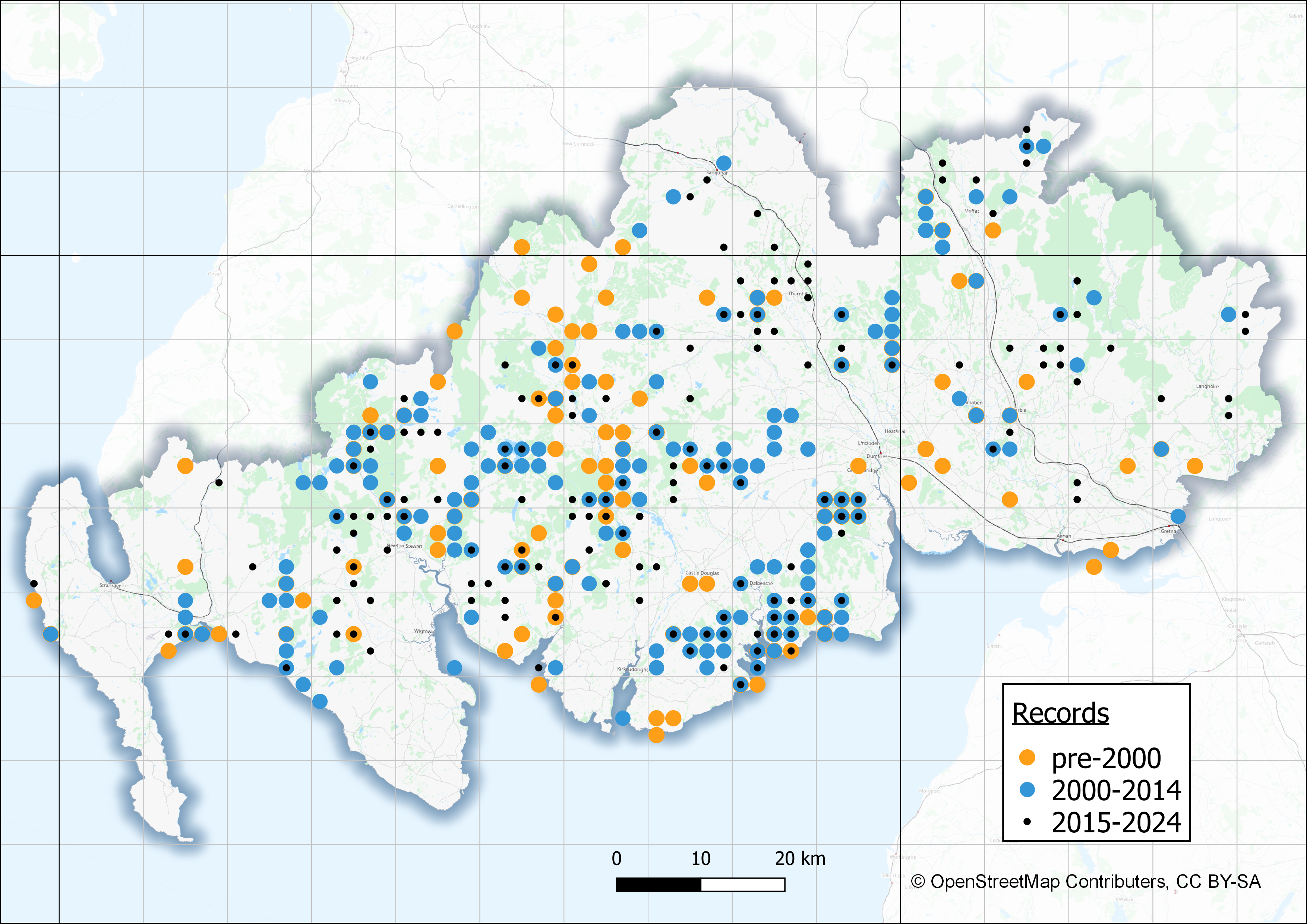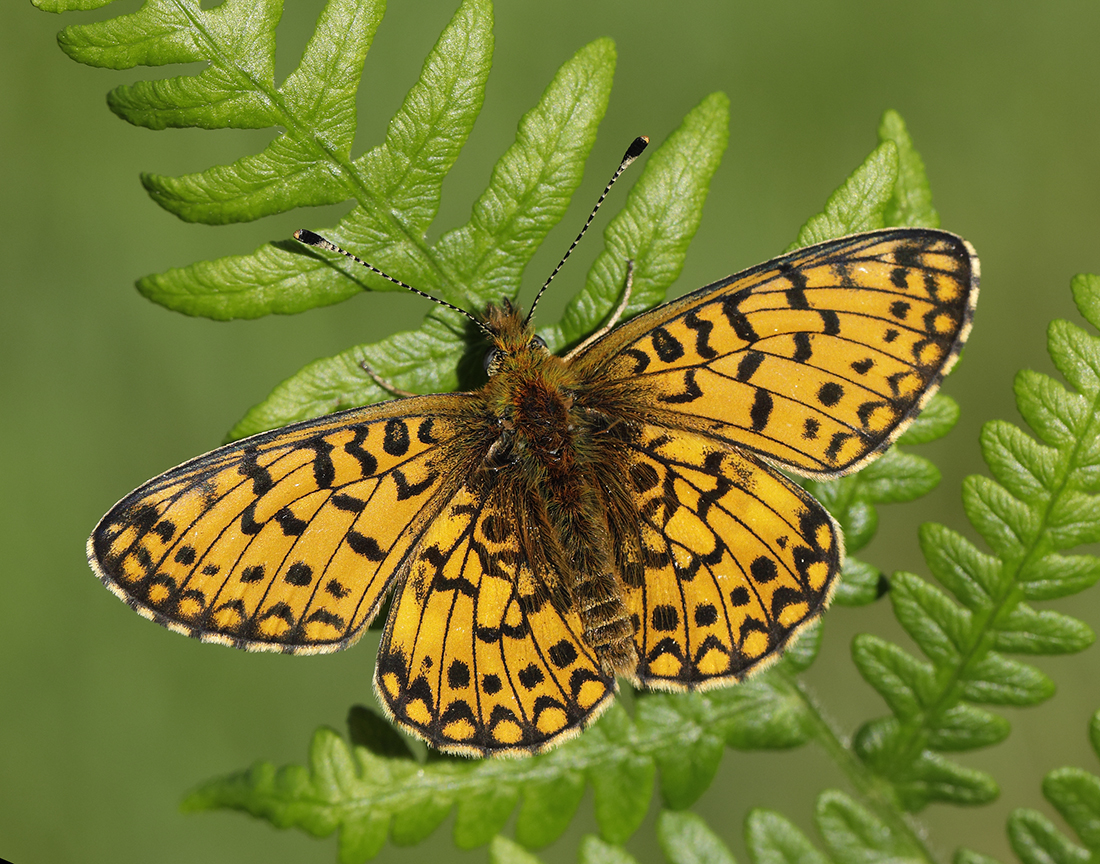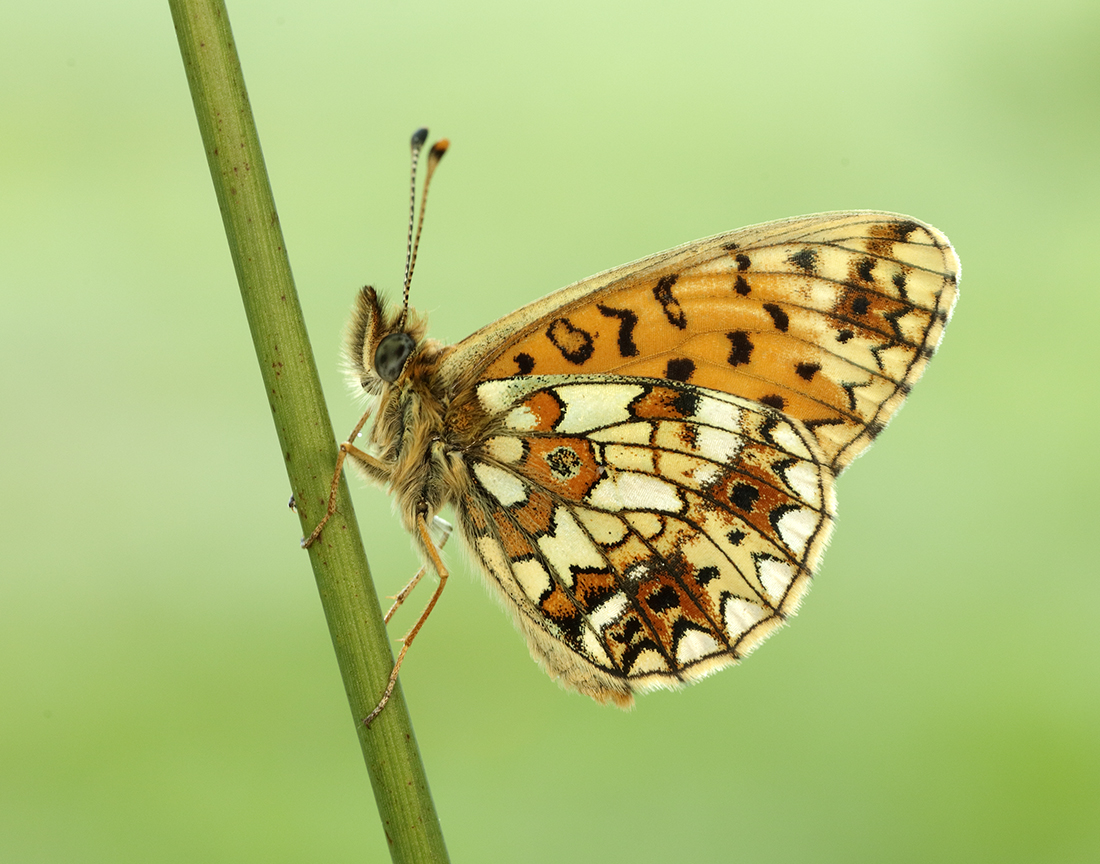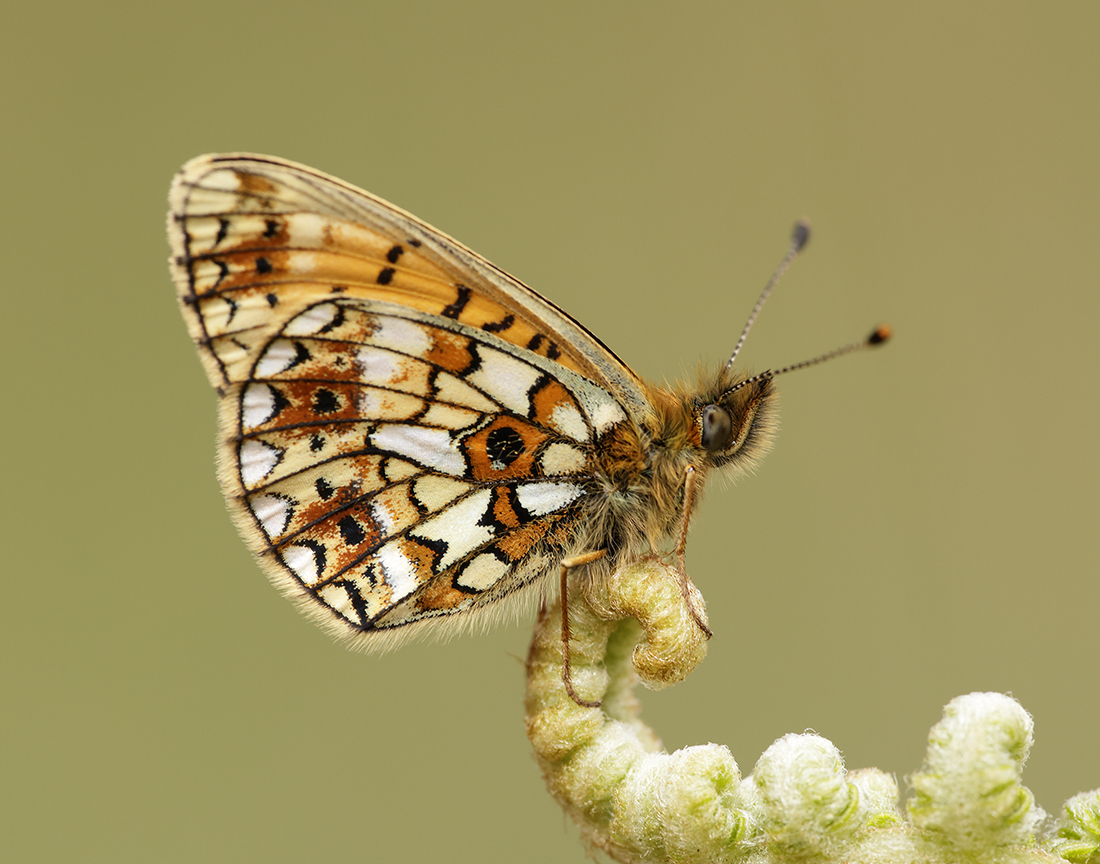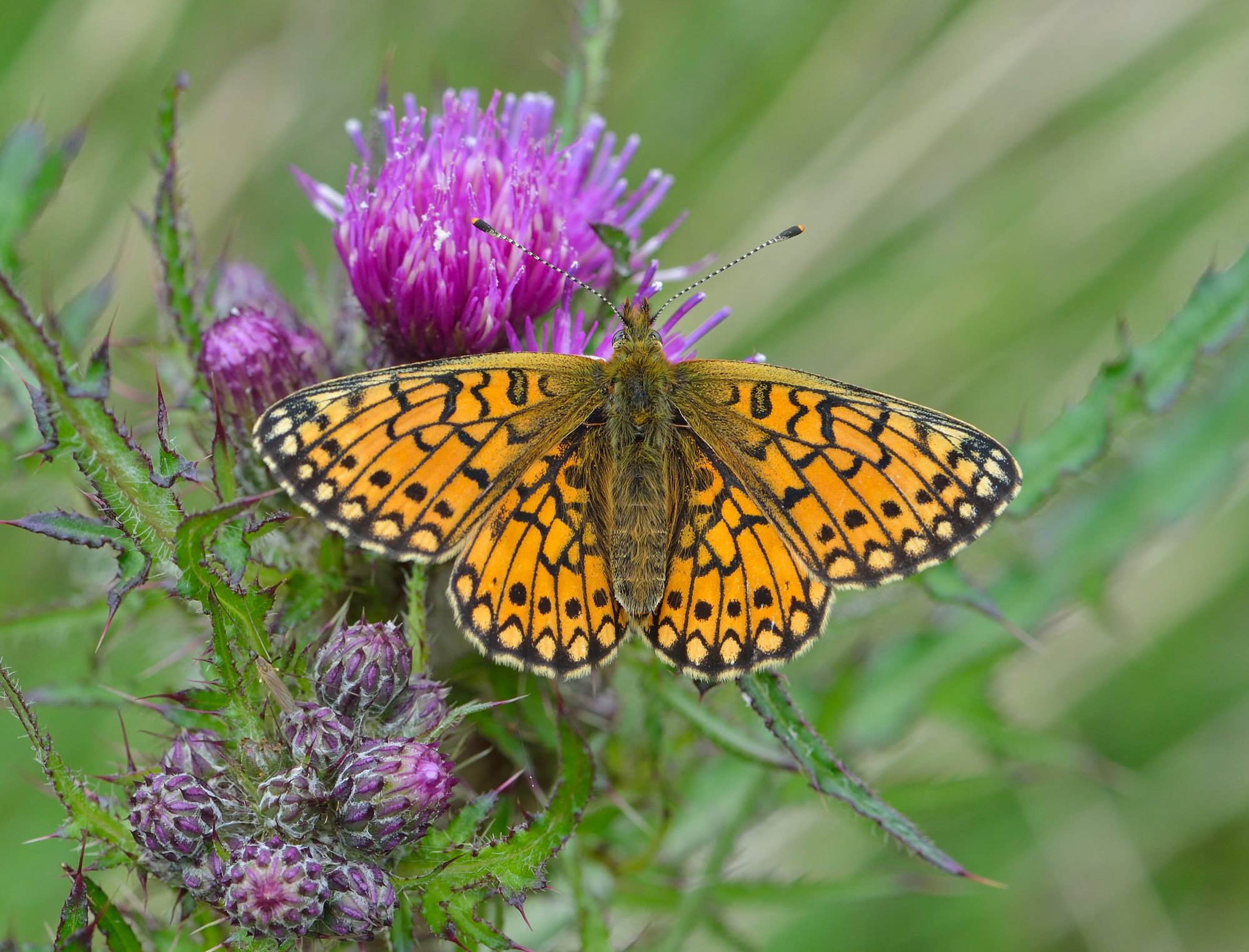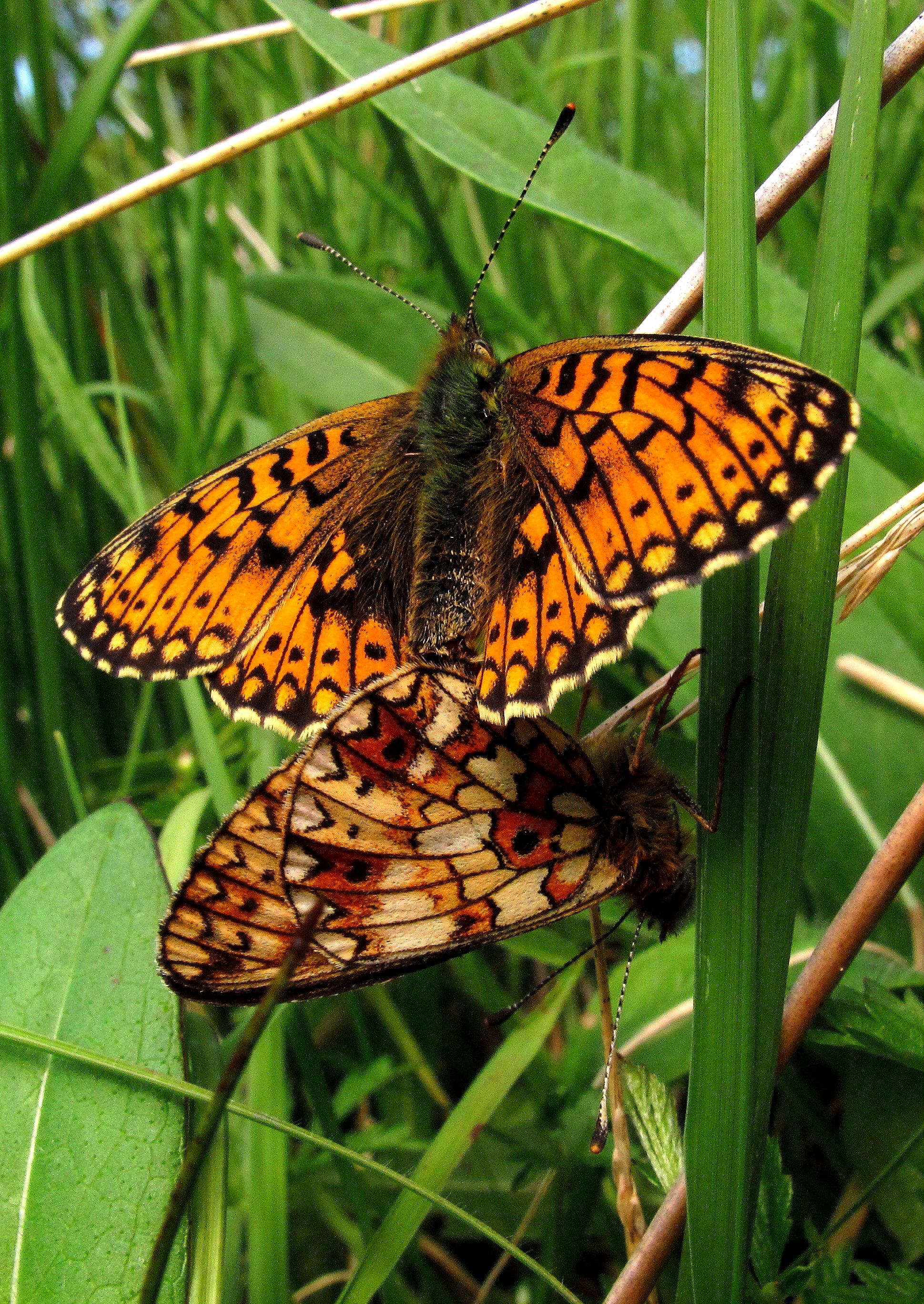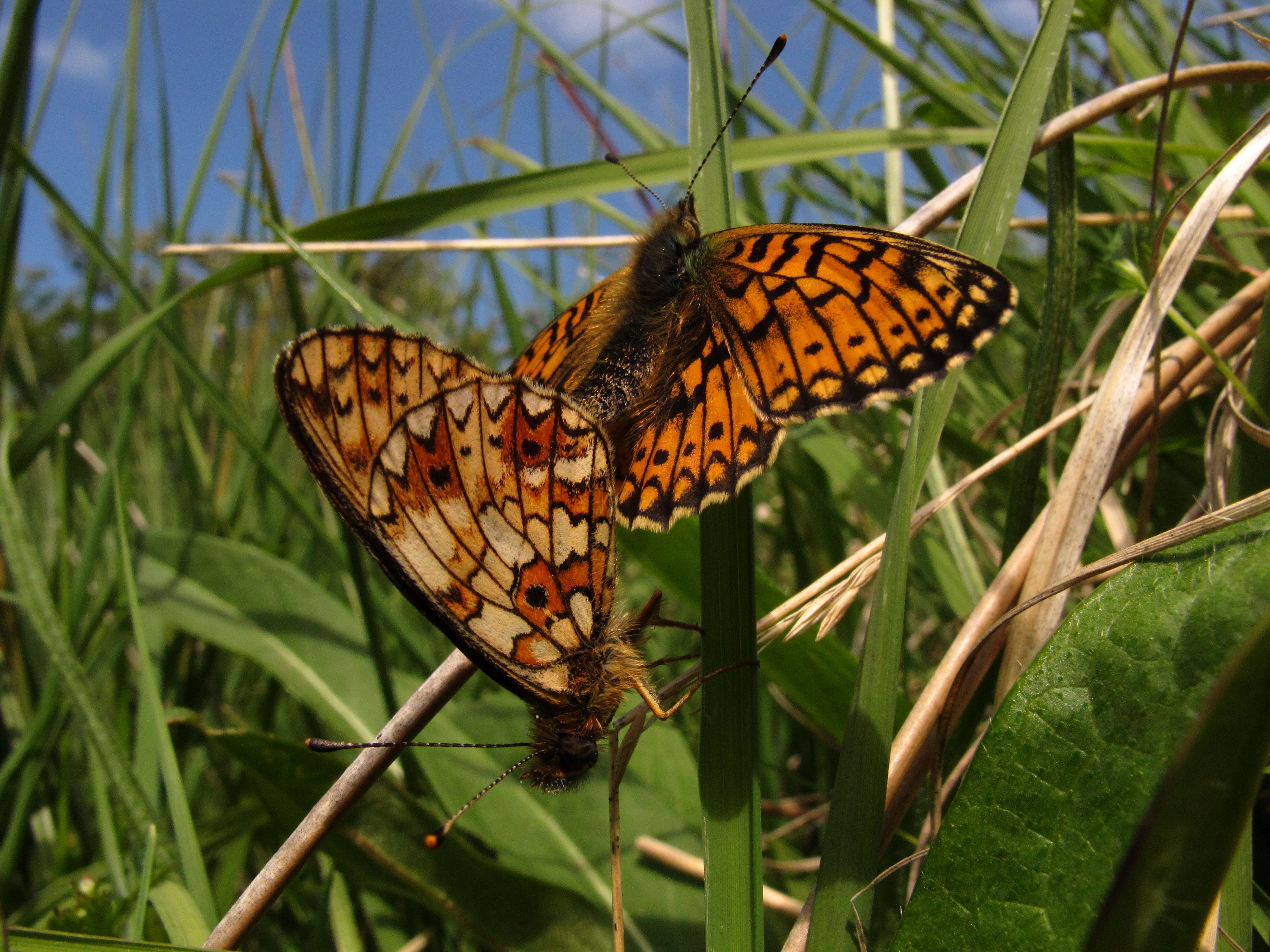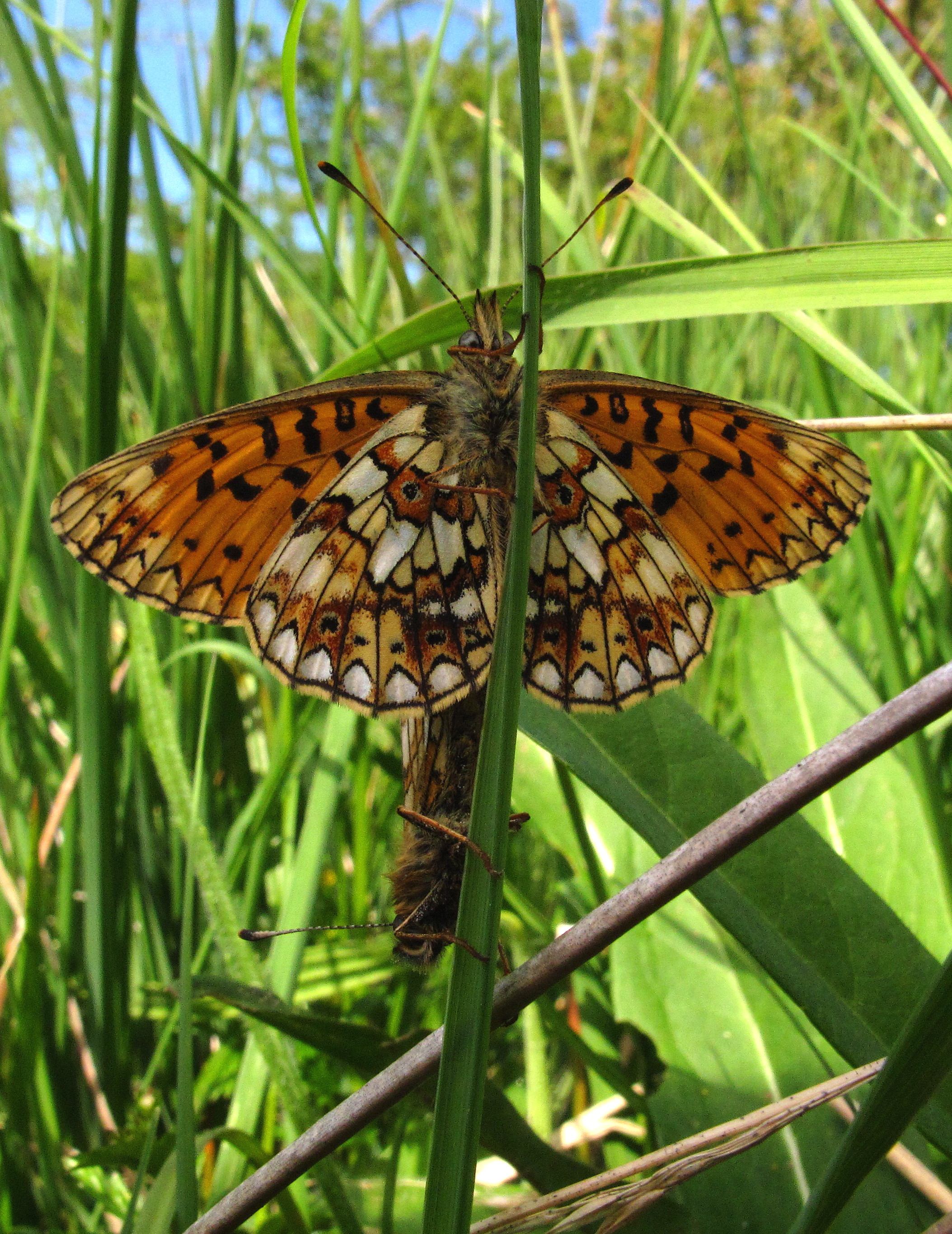The Small Pearl-bordered Fritillary is found across most of Dumfries and Galloway but is scarce on the Rhins of Galloway and in parts of the Machars.
The population trend for Small Pearl-bordered Fritillary at Mabie Forest shows a significant increase since 2000, and it is doing well in other parts of Scotland (in marked contrast to the trend for England where abundance has halved).
Identification
In some areas the Small Pearl-bordered Fritillary flies together with the look-alike Pearl-bordered Fritillary and confirmation of species’ identity is usually only possible if the butterfly settles and the under wing can be examined. The differences are much easier to see when the butterflies are freshly emerged – when worn they can be very difficult to separate, even using these features. Despite the names they are pretty much the same size, and although the Pearl-bordered Fritillary usually flies a couple of weeks earlier, for about a month from mid-May their flight periods overlap.
The Small Pearl-bordered and the much larger Dark Green Fritillaries are also sometimes confused, flying at around the same time and in similar habitats, but again a decent view of the under wing will dispel any doubts.
Life cycle & flight period
Small Pearl-bordered Fritillaries begin to emerge towards the middle of May, peaking in early June. Their flight period starts to peter out in July, but individuals are sometimes recorded through August and into September, these possibly coming from a second brood. Overwinters as a caterpillar.
Larval foodplant
In drier habitats, Common Dog-violet is the most common foodplant for the caterpillars, but in damper places the caterpillars can use Marsh Violet.
Habitats
Small Pearl-bordered Fritillary can be found in sunny, open woodland and woodland edge habitats, and on south-facing bracken hillsides that have a woodland flora. But it can also be common on coastal sites on the undercliffs, in marshes, the edges of peat bogs and on moorland.

